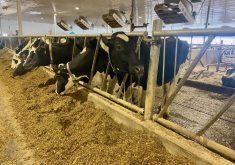Containers add versatility to the garden because their contents can be replaced or an entire container can be removed from sight if its contents flag.
Containers can be moved around to give a tired garden a new look or popped into bare spots in flower borders.
Start with a suitable container, which can be practically anything that will hold soil, from a concrete planter to an old pair of boots.
The size of the planter must be in scale with the size of the plants you choose, and its style must fit that of your garden.
Read Also

Farmland ownership fires up Saskatchewan politicians
Saskatchewan politicians debate the enforcement of farmland ownership laws in the province.
Fill the container with good soil, although the bottom portion of large and deep containers can be filled with lightweight material such as Styrofoam peanuts, garden packs or pop bottles.
Use anything that will fill up space and not decompose. This will make larger containers lighter and require less potting medium.
A mixture of two-thirds to three-quarter soilless mix and one-third to one-quarter compost or soil will allow the potting medium to better take up moisture.
It will also add nutrients to the mix because soilless mix contains few nutrients.
Add slow release fertilizer to the mix and add water to moisten it.
We all have our favorite plants, but the container’s location has to be considered when selecting plants. Choose sun-loving plants for a location in full sun and plants that perform well in shade for containers destined for shady spots.
Choose bloom colours that go well together, but remember that they do not necessarily have to be from the same colour family.
Some contrast adds interest, so combinations such as yellow and purple can be included. Use plants with coloured and variegated foliage to add further interest.
Include lots of contrast in foliage texture: plants that have large, round smooth leaves, others that have smaller crinkly leaves and a few with long narrow, grassy foliage.
Vary plant forms. You want upright plants and trailing ones, as well as a few taller plants for the centre-back of the arrangement.
Combine plants that have similar cultural requirements.
For example, growing plants that need lots of water with some that resent being constantly moist will lead to disaster.
If you go away for several days at a time during the summer, consider selecting only plants that are drought tolerant.
If your location is subject to winds, shy away from plants such as tuberous begonias that will not withstand much wind without being damaged. Choose appropriate plants for shade and sun.
Be sure to include several containers to brighten up the hardscape areas.
Containers will add beauty to any spot in the garden and provide much enjoyment during the growing season.
Albert Parsons has a diploma in horticulture from Guelph University. He operates a garden design/landscape consultation business from his home in Minnedosa, Man. He can be reached at














